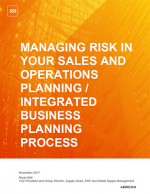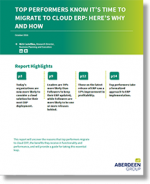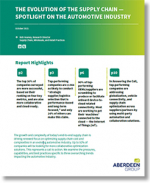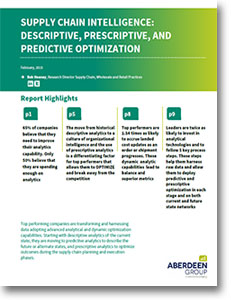Supply Chain Intelligence: Descriptive, Prescriptive, and Predictive Optimization
The goal of any analytics solution is to provide the organization with actionable insights for smarter decisions and better business outcomes, however, different types of analytics provide different types of insights.
Top performing companies are transforming and harnessing data adopting advanced analytical and dynamic optimization capabilities.
Starting with descriptive analytics of the current state, they are moving to predictive analytics to describe the future or alternate states, and prescriptive analytics to optimize outcomes during the supply chain planning and execution phases.
Big Data and Analytics: Trends and Challenges
Almost two thirds (65%) of companies now believe that they need to improve their analytics.
The use of optimization and data analysis to turn big data into intelligence and drive business decisions cannot be ignored any more – not if a business wants to be successful.
Today’s enterprises are looking to reduce costs and improve operational performance in the context of their increasingly complex and multi-tiered global supply-demand networks.
The importance is only amplified for those with global supply chains and partners.
Recent Aberdeen research suggests that contributing factors include:
- the growing availability of business data to analyze,
- the high velocity and complexity of business decisions and rules,
- technological improvements in data collection and analysis, and
- the increased need to determine total cost-to-serve across new logistics, transport channels, and lanes.
All of these factors have driven the need and desire for businesses to base decisions on optimization of the company’s supply-demand network, spanning both the current and future state scenarios.
Today’s optimization challenge goes beyond the current state.
Companies need to provide more future-looking answers and recommendations to execution decisions that cannot be addressed by historical analysis.
Indeed, this requires a move from current state, descriptive analytics to analytical optimization that applies prescriptive and predictive intelligence during both the planning and execution phases.
What’s Related




Favorites





